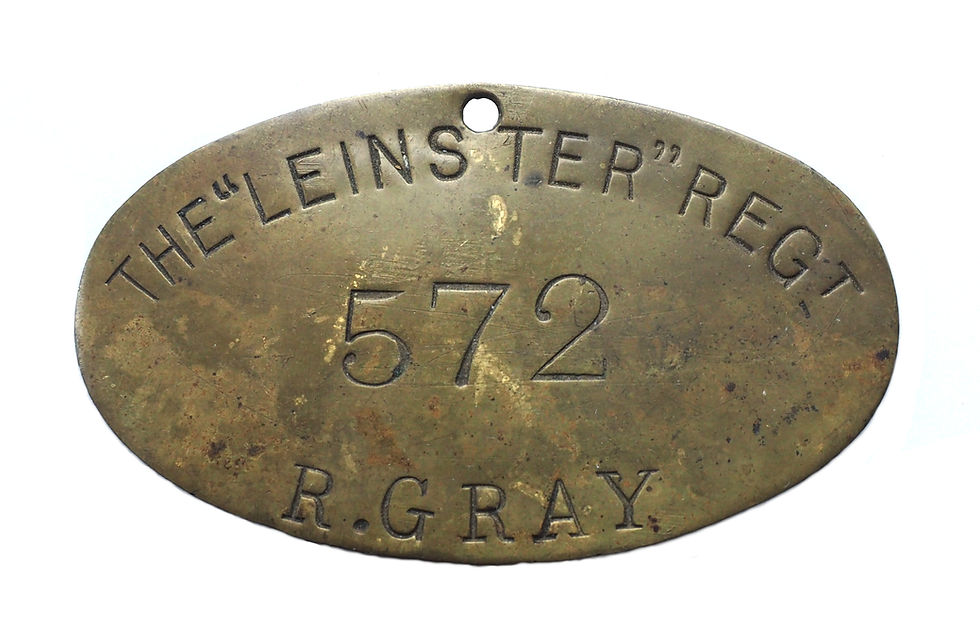Moore Park House Fire
- Stephen Callaghan
- Sep 22, 2023
- 3 min read

A postcard recently listed in an online auction site caught my attention. Initially the postcard appeared to be of a burnt-out military barracks with the brief caption “Moore Park Fire”. Without giving this too much consideration, my first instinct was to assume there might have been some connection with Fermoy Barracks, and potentially around 1922. However, a 1909 postmark made me question my latter assumption. After some further investigation I discovered that the burnt-out building in the picture is Moore Park House, which accidently caught fire in 1908. The house had been in the ownership of the War Department at the time of the catastrophic fire.
While a comprehensive history of the house would be nice, the potted history outlined below will have to suffice until a more comprehensive history can be complied. The house was likely constructed around the start of nineteenth century by Stephen Moore, 2nd Earl of Mount Cashell. It was located to the south of Kilworth town in the townland of Moore Park. The townland was purchased by the Moore family in 1684 for £5500, the house was situated on the banks of the River Funshion with around 800 acres of adjoining land, including large wooded areas.
The house and adjoining land appear to have been for sale in 1864, but seemed to have stayed with descendants of the Moore family, as the 1901 census records the main residence as Hanrietta Holroyd Smyth, the daughter of the 5th Earl of Mount Cashell and wife of Colonel John Henry Graham Holroyd Smyth (who was already covered on this blog!).
As well as Hanrietta, the census records two daughters, Helena Holroyd Smyth and Sophia Holroyd Smyth. There are also servants Henry (an army pensioner) and Allison Coles, along with their five children.
James Fraser mentions in his 1859 book A Hand Book for Travellers in Ireland the house as “a large plain structure” the 1901 census certainly conveys how large the house was, with 52 rooms and 26 front facing windows. The out-buildings are equally impressive with, six stables, four coach houses, one harness room, two cow houses, and one of the following calf house, dairy, piggery, fowl house, boiling house, barn, turf house, potato house, workshop and shed.
The house was sold by Lady Hanrietta Holroyd Smyth to the War Department for the sum of £37,000, sometime between 1901-1905. The house and grounds were intended to form a training centre for a mounted infantry training school in April 1905. Later the same year the site became additionally became the headquarters for the 12th Company, Royal Engineers, who were under the command of Captain McKechnie.
On 19 September 1908 the Cork Examiner announced that there would be an auction of many items from the house, including Chippendale and Sheraton furniture, engravings, prints, oil paintings, pierced brass fenders, bric-a-brac, and bedroom appointments. The sale was to take place at the Market House, Kilworth on Monday 28 September 1908, with an admittance fee of one shilling – which would be refunded to purchasers!
The fire which essentially destroyed the house began around 6:30 am on 7 December 1908. A sentry caught the smell of something burning, the smell coming from the recreation room, upon opening the door to investigate he was overpowered by smoke. The fire spread so quickly that many of the soldiers in the house at the time had to escape through the windows by quickly knotting bedsheets together to form makeshift ropes. Information was sent to Fermoy military barracks, and a fire party of men from the 2nd Battalion, Royal Dublin Fusiliers were sent to extinguish the fire, though they struggled to get any pressure from their water pumps. The entire house was destroyed including all the soldier's belongings. There was fortunately no loss of life. The overall damage done to the house was estimated between £10,000 and £20,000.
An article in the Irish Independent, which reproduces the same image on the postcard, credits it to J. C. Coucher of Fermoy. The 12th Company, Royal Engineers remained in Moore Park until August 1914, then the left for France. The house was never rebuilt and its ruins have long since been demolished.




Comments